How to Develop a Training Module: A Step-by-Step Guide

Did you know that employees value learning opportunities more than free snacks and nap pods? Unfortunately, many corporate training modules are dry, irrelevant, and fail to capture employee interest. This leads to disengaged learners and ultimately hinders your organization’s development.
In this article, we’ll equip you with the tools you need to create interactive training modules for employees that spark engagement and empower learning.
What Is a Training Module?
A training module is a structured, self-contained unit within a training course, designed to deliver targeted knowledge in an organized and coherent way. It focuses on a specific topic or learning objective, such as mastering a new skill in a particular area.
A module is built to maximize the effectiveness of the training and provides clear logic to the overall course. It contains learning materials, resources, exercises, and assessments in various formats like text, video, and interactive activities.
As learners progress through each module, they can achieve the planned learning outcomes effectively and gain a complete understanding of the subject.
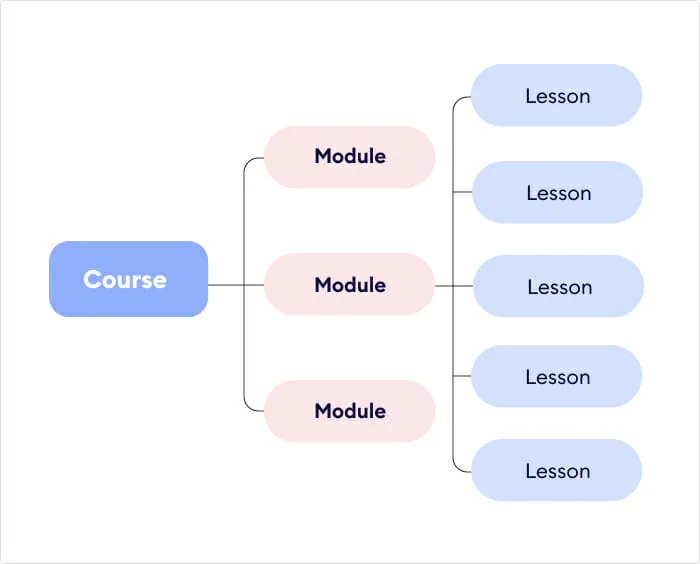
Types of Training Modules
Striking the right balance with a variety of content types enables you to craft a more enriching training experience for all your learners. Here are some examples of employee training modules that cater to different learning styles, along with tips on how to effectively utilize them:
1. Informational e-course
An informational eLearning course is a popular online training module format that typically includes a set of slides with text, pictures, and “Next” buttons. This provides learners with information on a specific topic and can be used in different aspects of the business sector. When you create online training modules, focus on clarity of look and optimal length to help learners focus on the learning topic better.
Example of an informational e-course
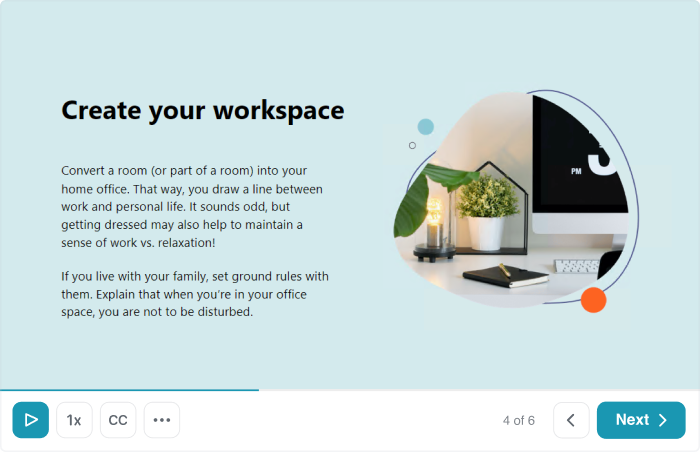
A ‘Work from Home’ course made with iSpring Suite
Check out an online training module →
Best suited for
- Delivering standardized knowledge, such as the onboarding of new hires, or safety, security awareness, or compliance training.
- Providing information on a new product, technology, or policy update.
2. Interactive assessment
An interactive assessment is a type of online quiz that incorporates a variety of question types, custom branching, and scenarios. The more these knowledge checks engage learners by prompting them to move, compare, or choose objects, the more effective they are for the learning experience. For this reason, it might be a good idea to use multiple-choice, true or false, fill-in-the-blank, drag-and-drop, matching, and sequencing question types in your online training modules.
Example of an interactive assessment
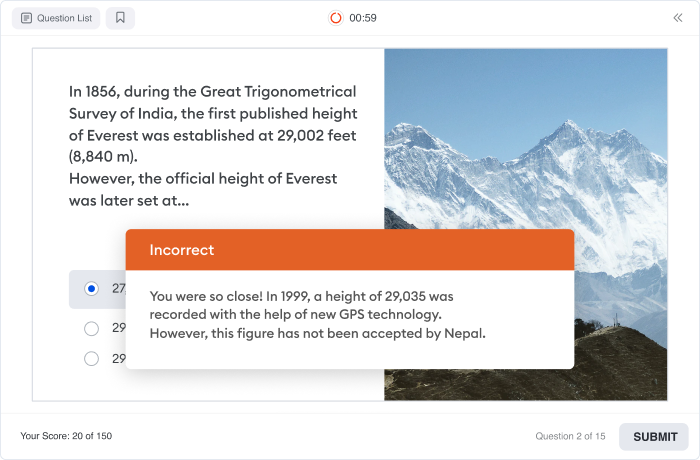
Check out a complete training module →
Best suited for
- Measuring your learners’ level of knowledge relevant to their work and/or ability to apply knowledge.
- Challenging tasks that require certification or credentialing.
- Proof of completion of learning activities.
- Identifying learners who may need additional support.
3. FAQ interaction
An FAQ interaction is a layout that gives users one-click access to reference information and frequently asked questions on a specific topic. You can present an FAQ interaction as a series of questions and answers or a list of certain topics and details. You can also add keywords to your FAQ interaction to enhance search functionality within your online course.
Example of an FAQ interaction
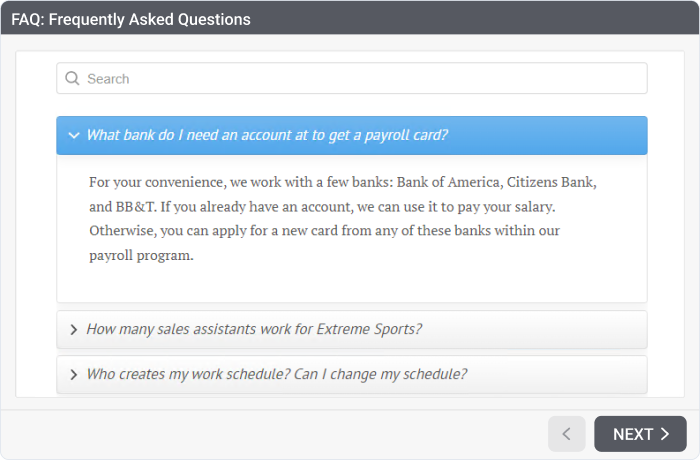
An FAQ training module template in iSpring Suite
Best suited for
- Creating a standard format to organize and present basic information.
- Glossaries, definitions, or other basic knowledge-level facts.
- Providing information that is supplementary to the main content of the training course.
4. Video lectures and screencasts
If you opt for a video-based training format, chances are it will comprise video lectures and screencasts. A video lecture is an instructional video that has been recorded and saved for viewing at a later date.
Example of a video lecture

Check out a complete training module →
A screencast is a video recording which captures the actions that take place on a screen, like accessing programs or navigating certain features.
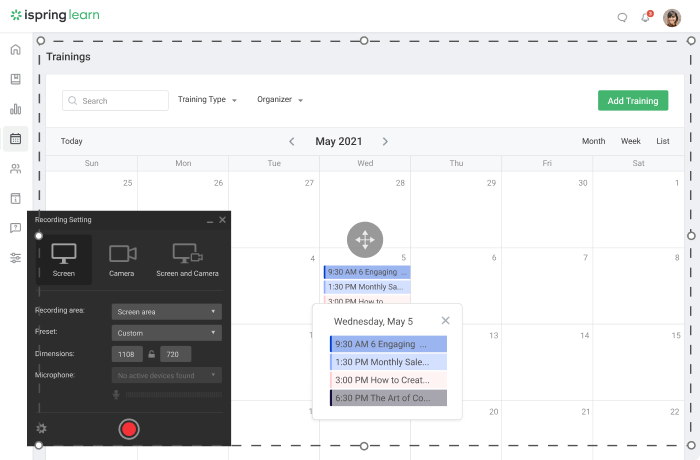
Tutorials to demonstrate basic business tasks, such as how to access programs, how to navigate through an online system, or how to fill out forms.
Best suited for
- Providing a large audience of learners with access to a particular portion of knowledge, like a lesson.
- Creating an effect of presence and enhancing comprehension.
Also read →The Ultimate Guide to Lecture Capture
5. Role-play scenarios
Role-play scenarios help your learners build communication skills by applying their knowledge in conversations with colleagues and customers and measure their performance. These online training modules are basically dialogue scenes with branching scenarios that immerse learners into practicing in a realistic, yet risk-free environment, which is perfect for sales training.
Example of a role-play

Check out a complete sample training module for employees →
Best suited for
- Scenario-based learning for customer service and sales teams to develop customer relationships and close sales.
- Educating coaches and instructors who have to communicate information systematically to individuals or audiences.
Also read → Retail Sales Training – How to Move It Online
6. Microlearning module
A microlearning module is a bite-size lesson that provides a focused answer to a single problem or question. These eLearning modules can usually be completed in about five minutes at the point of need. If they’re too long, it’s better to break them down into smaller segments. The key principle to follow is: one idea per module.
Example of a microlearning module

Check out a complete training module →
Best suited for
- Employee training during an idle moment and immediate practice of the new knowledge.
- Taking courses about a new product or services, updated policy, or new terms super quick.
- Providing the basics of a learning topic prior to face-to-face training sessions.
7. Digital job aid
A digital job aid is a document or presentation that is accessible virtually and can be played, downloaded, saved, or printed by the learner. Typically, it can be a flipbook made from Word, PPT, or PDF files.
Example of a digital job aid
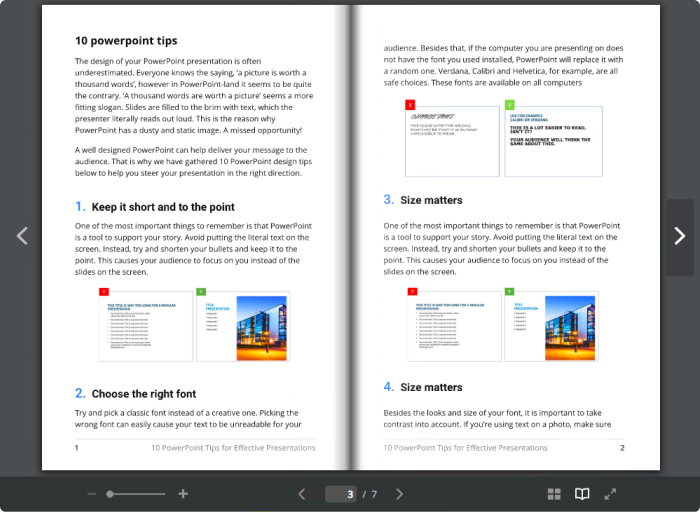
Best suited for
- Accessing manuals, guides, instructions on mobile devices, or on an internal drive.
- Microlearning initiatives within a company.
Also read → Types of Employee Training
By using these various training module formats, you can create online training for employees that is both engaging and effective. Each course module example provided above shows how diverse training approaches can meet specific educational goals and enhance the overall learning experience.
Components of a Training Module
Before diving into the guide on how to create a training module, check out the components it might include:
1. Introduction: This section provides an overview of the training module and sets the context for the learning objectives.
2. Learning Objectives: This module should clearly state what participants will be able to understand or do after completing the training.
3. Content: This is the main body of the module, where the actual training material is presented. It may include text, images, videos, interactive elements, and other multimedia resources.
4. Activities and Exercises: To enhance learning, modules often include activities and exercises that allow participants to apply new skills. Developing training modules with interactive exercises can significantly improve retention and understanding.
5. Assessments: These are used to measure participants’ understanding and retention of the material. Assessments can take various forms, such as quizzes, tests, or practical assignments.
6. Summaries and Reviews: At the end of each section or module, a summary or review section is often included to reinforce key concepts and provide a quick recap of the material covered.
7. Resources and References: Additional resources, references, and recommended readings may be provided to further support learning and provide participants with other relevant content.
8. Conclusion: A course module should conclude by summarizing the key points and reiterating the original objectives.
By focusing on these elements, you can create training modules that are well-structured and impactful.
How to Develop Training Modules
Creating training modules, as well as developing a training curriculum, requires careful planning and execution. In this comprehensive guide, we walk you through the process of developing an effective training module.
Whether you’re a seasoned instructional designer or just want to learn how to create training modules, this guide will provide you with valuable insights and practical tips that will empower you to create an impactful training module.
Step 1: Define the Problem
The first step to achieving training success is to solve the right business problem!
Ask detailed and probing open-ended questions to find out:
- What is the nature of the problem to be solved?
- What knowledge or skill is needed to bridge this gap?
- What is the level of knowledge or performance that your people actually do have?
- What is the expected level of knowledge or performance your people should have on this topic?
The answers you get will ensure a clear understanding of the business problem and help you set up learning objectives for your online training modules.
At this stage, it is also important to gather information about your audience. This will enable you to select the appropriate level of difficulty and tone for the modules.
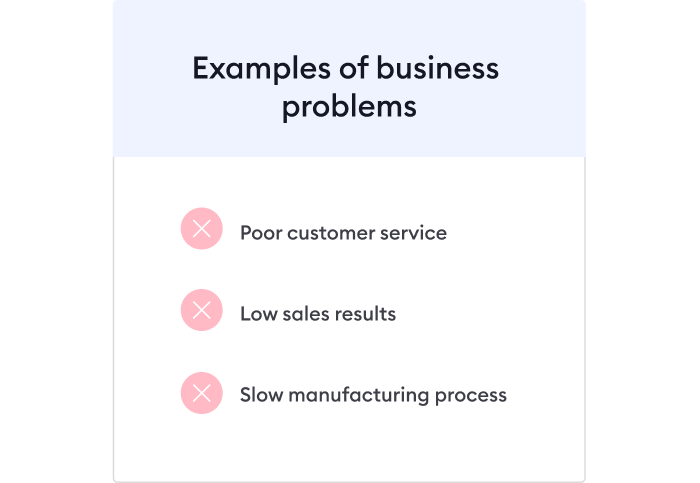
Step 2: Write a SMART Objective
A training goal or learning objective establishes the reason for learning and communicates the focus of the training module. For best results, when building a training module, think SMART and create a goal that is:
- Specific – the learner knows what they will learn or be able to do after finishing the course;
- Measurable – learners will leverage this knowledge consistently for each report;
- Achievable – the learner will be able to perform the tasks you expect them to;
- Relevant – the content will be focused on job essential knowledge and skills;
- Timely – the learner will be able to complete it in a timely manner.
A SMART goal will motivate the employee by showing them “what’s in it for me” in learning.
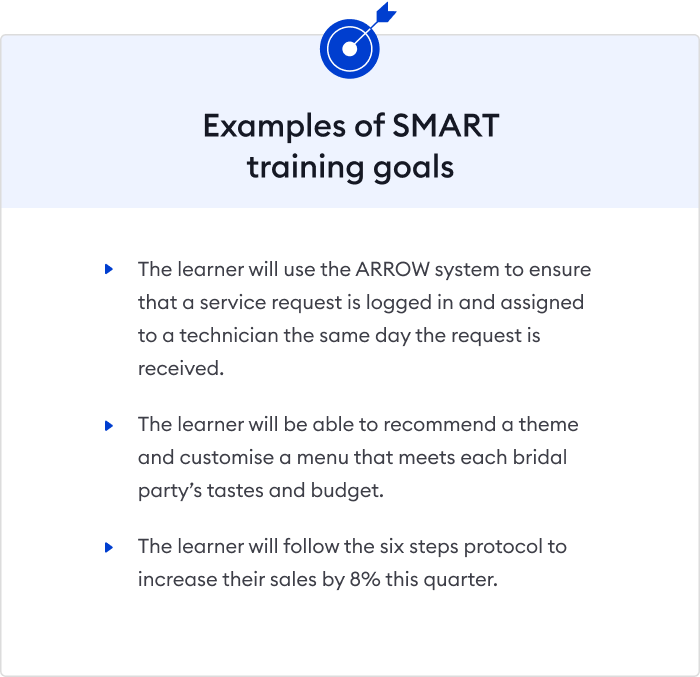
Step 3: Decide on the Right Content Format
After you explore the problem and decide on your objective, you’re all set for the practical part!
The secret to building great training is to match the right kind of training module to the learning task at hand. The chart below aligns different content formats with particular learning needs.
| Learning/Organizational Skill or Need | Recommended eLearning Solutions |
|
|
|
|
|
|
|
|
|
|
|
|
|
|
Whether you’ve never worked with an eLearning tool or you’re an eLearning pro who wants to expand your repertoire and make content quicker, iSpring Suite will help you develop training courses that are both effective and engaging. It’s able to create varied formats of interactive learning content easily, in the PowerPoint interface and even from existing ppt, Word, and pdf files.
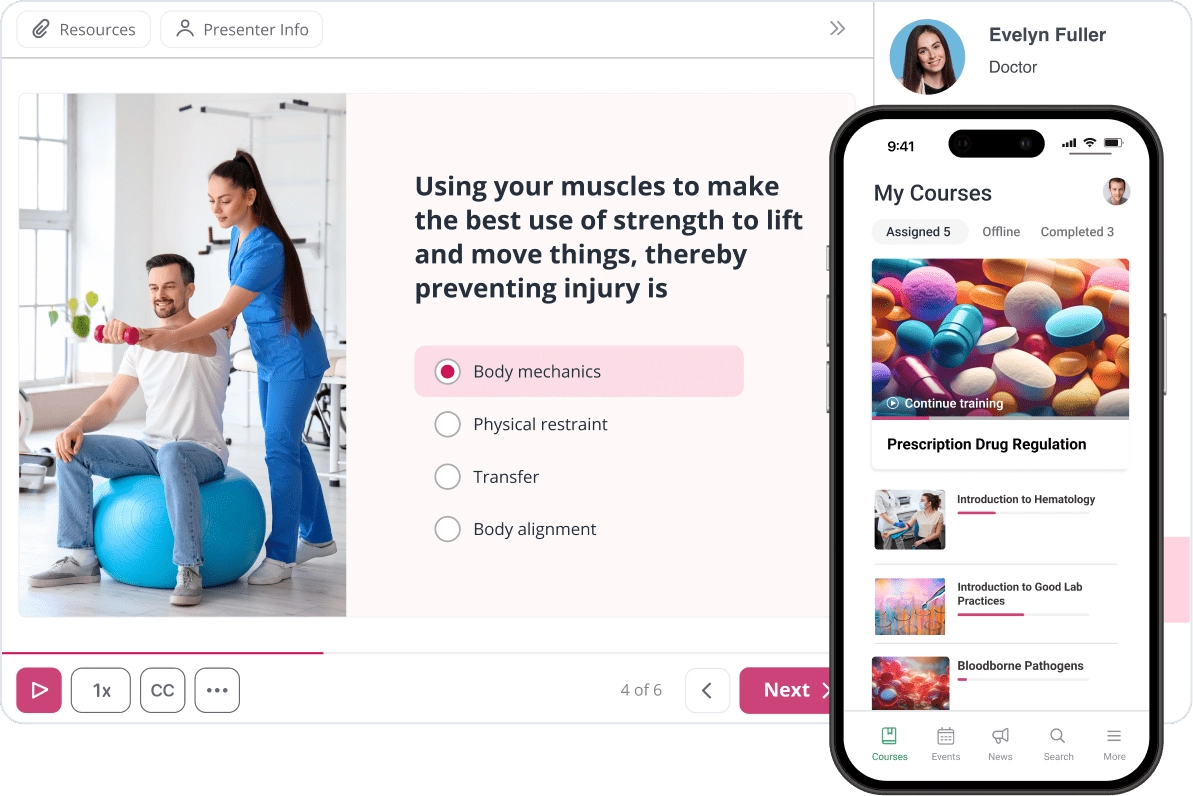
iSpring Suite provides the near-limitless options to populate your slide-based course with quizzes, ready-made interactions, and characters, build role-plays by simply pasting script lines when needed, and record any type of instructional videos without high-tech video editing tools. Plus, it allows you to co-create and review online training modules together with colleagues in real time, which is great for our next step.
Step 4: Feedback and Revision
After a bit of work on your part, the first version of your training module is ready! Now, it’s time to send the first draft to your subject matter experts (SMEs) and stakeholders and collect their feedback.
Don’t be surprised if subject matter experts leave a LOT of feedback on your initial efforts and want to put it all into the online training modules. This may cause an endless feedback loop which you can successfully prevent with a three-step design protocol, known as alpha/beta/gold:
- The first draft of a training module is known as the alpha draft. For an experienced instructional designer, an alpha draft should be about 75-80% correct. This is typically where you will get the most feedback from your SMEs.
- The revised second version of a training module is the beta draft. If you’ve received quality feedback during the first round, your beta version should be about 95-98% accurate. So, you should have far fewer revisions at this point.
- The final draft is called the gold version. Unless your SMEs have missed vital information in the previous rounds of review, the gold version should be 99-100% correct. SME and Stakeholder review of the gold draft should go quickly, and you now have an awesome trai
Step 5: Run a Pilot with a Test Audience
As a best practice in training course development, you should run a pilot of any new training before putting it into circulation across your organization. To get started, select a test audience that consists of a small group of employees who are not proficient in the given topic. Then, gather feedback from them to find out what worked best and what could be improved in the training module. If the intended performance goals are not achieved, think of the gaps that might exist. Discuss the ways how to fill in these gaps with SMEs and stakeholders.
Step 6: Create a Final Version, Upload, and Launch
At this stage, you’re ready to create the “final final” version of your training module and provide access to it through the learning management system (LMS). You may want to work with your business partners, change management, or project management to coordinate a formal roll-out of the new learning initiative.
You may also want to provide detailed reporting data about learning consumption and results 30, 60, and 90 days after your training program is launched. Tracking data for on-the-job performance metrics is a great way to show the training’s impact on employee development and actual work performance.
Also read:
→The Best HR Tools for Streamlining Your Workflow
→Key Recruiting Metrics and How to Improve Them with Online Training
Create interactive online courses like a pro
Master every stage of interactive course development with 20 video lessons. Apply theory to practice with expert instructional designers.

FAQ on Training Modules
Here are answers to some common questions about creating a training course.
What is the purpose of training modules?
The purpose of online training modules is to provide information and instruction on a specific topic or skill. This so-called “modular learning” aims to educate and train individuals to improve their knowledge, skills, or performance in a particular area. Different modules may include various interactive elements, assessments, and resources to enhance the learning experience.
What is the difference between a training module and a training manual?
Online training modules are designed to deliver information and instruction through a combination of multimedia elements, such as videos, audio clips, interactive activities, and quizzes. They often utilize e-learning platforms or software to provide an engaging and interactive learning experience. Learning modules are particularly effective in scenarios in which hands-on practice, simulations, or demonstrations are required.
On the other hand, training manuals are typically in a written format, consisting of detailed text-based explanations, diagrams, charts, and examples. They provide a comprehensive and systematic overview of the training content, allowing learners to study and reference the material at their own pace. Training manuals are commonly used in self-paced learning environments, where learners can read and review the information independently.
Ultimately, the choice between a training module and a training manual depends on the specific training objectives, target audience, and available resources. Both formats can be valuable tools for delivering effective training, and often a combination of both may be used to cater to different learning preferences and needs.
Takeaways on Creating a Training Module
- Solve the right business problem!
- Adhere to SMART objectives.
- Try different styles in online learning.
- Use an authoring tool such as iSpring Suite to create engaging learning materials, and an LMS to manage training.
- Bear in mind SME participation, feedback, and revision.
- “Test drive” this new initiative before making it available organization wide.
Training is never a one-and-done experience. Organizations always starve for improvement, so the shelf life of even the best eLearning can be anywhere from a few months to just over a year. Review all of your online training modules at least twice a year for accuracy; expect that you will need to either update or completely revise your content on an annual basis.
Now that you know how to develop a training module, it’s time to put your new knowledge into practice. Still don’t have iSpring Suite AI? Download this course authoring software for free now and start creating impactful training modules right away!
If you’re looking for a reliable, easy-to-use LMS, get an iSpring LMS trial or request a demo!







